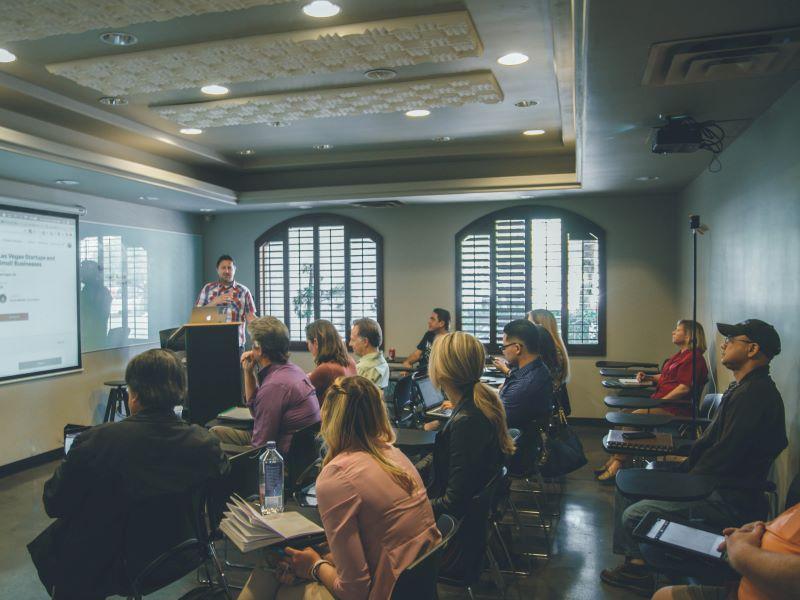
How do we rescue the reputation of blended learning?
To convince students and stakeholders that blended learning is worth the full tuition fee, we need to tell them exactly how it will work, says Russell Crawford

Let’s get the elephant in the room addressed up front: times have changed and a return to “normal” is just not on the cards, not truly. Blended learning – to a greater or lesser extent – is here to stay.
So, how do we rescue the reputation of blended learning, which has been battered by students’ experiences of universities’ hasty response to the pandemic and become synonymous with low-quality content?
A focus on two areas is key: communication and transparency with students; investment in digital tools and staff skills to support a new model.
Students are telling us that some aspects of blended learning are welcome – more asynchronous activity and digital engagement offers a more flexible timetable, greater accessibility and the opportunity to set their own pace of learning. However, to convince them, their parents and our sector stakeholders that a blended model for HE is worth the full tuition fee, by providing a rich experience that enhances opportunities for innovation and growth, we need to tell them clearly and exactly how it will work.
At Falmouth, we’ve started by repositioning our offer. We’ve taken the decision to replace the term “blended” with “digitally enhanced learning”. This is not about spin and presentation; the terminology is a more accurate description of what we are actually providing. Particularly in a creative context, but generally in all disciplines, some face-to-face learning is essential and irreplaceable − and it should only be supplemented by digital aspects where a physical alternative is obsolete or the digital alternative is more inclusive.
We have also developed “blended learning ratios” as a scaffold around which academic colleagues can rebuild and redesign their courses and through which we can describe the structure of their course to our students. These “golden rules” break blended learning into three formats (in person, synchronous online and asynchronous) and establish thresholds for each. An infographic has been created for every course clearly illustrating how much in-person, synchronous online and asynchronous learning students will experience. This visual communications approach is especially useful when addressing a Gen Z audience, which is used to consuming digital information fast and on the go.
Concise, transparent communication is not only good for building trust with the student body, it also supports compliance with consumer regulations by being clear and upfront about the way in which we are evolving the delivery of our courses.
Of course, only so much can be achieved with good communication. Students are savvy consumers and − quite rightly − demanding customers. This means universities must invest in three strategic areas right now, so they can provide high-quality digitally enhanced learning that exceeds the expectations of their students.
First, universities need to think about their spaces, both physical and virtual, to ensure they are capable of flexing to a new model. Next academic year, but also further ahead, what does the modern classroom look like? Institutions need to be asking quite radical questions about the future of their estate. Do we need lecture theatres anymore? Should staff offices be reinvented as mini recording studios for creating quality asynchronous content? Do we need better use of technology to bring the in-person and virtual communities together?
Second, we need to catch up with other industry sectors and their adoption of digital tools. In a HE context, this means better use of technologies to introduce more personalisation into the learning journey and the use of data analytics for insight, as well as wider use of platforms to facilitate collaboration, conferencing and multimedia content creation.
Finally, and perhaps most importantly, digital content creation. If more learning and teaching is to be provided online, the delivery and associated materials need to meet the high standards that a generation of digital natives and content creators paying £9,500 per year expects. This can only be achieved if staff across institutions are supported to grow their own digital skill sets, so it’s embedded in everyday practice.
I began by stating that a return to “normal” was not a realistic prospect. But nor is it likely that all institutions will be prepared with flawless models for digitally enhanced (blended) learning in September. This will certainly be an evolution as we put into practice what we learned this year and adapt to the new reality.
Will students be convinced that our plans will provide a quality, enriching university experience? Ultimately, the proof will be in the pudding. Students will be returning to campuses in September for a fresh start in a new academic year, and they will be providing us with feedback. We need to listen and respond. Openness and innovation will be essential for a reputational rehabilitation of digitally enhanced learning.
Russell Crawford is director of learning and teaching at Falmouth University. He won Times Higher Education's “Most Innovative Teacher of the Year” award in 2017.


